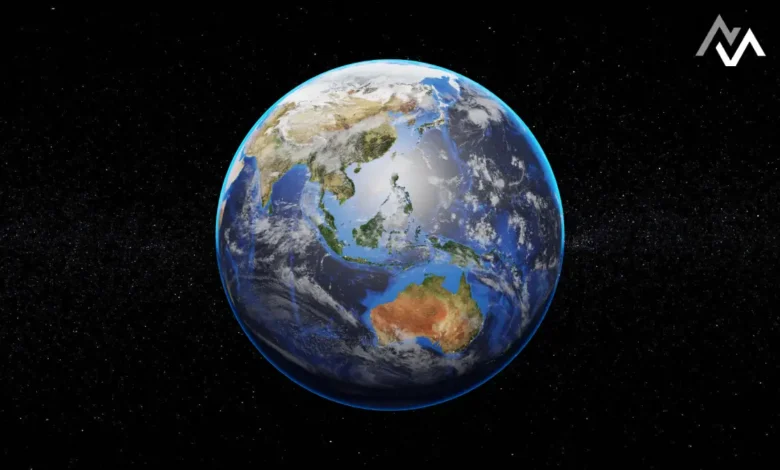A Wake-Up Call from the Time Before Dinosaurs: Lessons for Today’s World

Humanity has always been captivated by the history of life on Earth. The age of the dinosaurs, which ended 66 million years ago, often draws the most attention. However, the periods that predate the dinosaurs—the vast stretches of time often overlooked—hold invaluable lessons for modern civilization. They serve as critical reminders of how the Earth has evolved and adapted to dramatic changes, many of which were triggered by natural forces that remain active today. In light of recent events, it feels as though nature has given us a resounding wake-up call.
Ancient Climate Shifts and Their Modern Parallels
One of the most significant aspects of Earth’s ancient history is the sheer power of climate shifts. Long before dinosaurs roamed, Earth experienced several cataclysmic changes in climate. For instance, the Permian-Triassic extinction, which occurred around 252 million years ago, wiped out nearly 96% of marine species and 70% of terrestrial vertebrate species. The cause? A combination of volcanic activity, rising greenhouse gases, and the subsequent warming of the planet.
These ancient climate upheavals hold eerie parallels to the environmental challenges we face today. While today’s climate change is primarily driven by human activity—burning fossil fuels, deforestation, and industrial emissions—the end result may be frighteningly similar. Rising temperatures, acidifying oceans, and loss of biodiversity all mirror the effects of past mass extinction events.
Earth’s Fragile Balance: Ecosystems in Peril
The biodiversity of our planet, much like in the pre-dinosaur era, is intricately connected to the health of ecosystems. A slight imbalance in temperature, oxygen levels, or oceanic chemistry can lead to widespread species extinction. The warning signs are already evident—coral reefs are bleaching, species are migrating to new habitats, and extreme weather patterns are becoming the norm.
During the Ordovician period, around 450 million years ago, a massive ice age was triggered by the rise of large land plants that sucked carbon dioxide out of the atmosphere. This abrupt cooling led to one of the five great extinction events. Fast forward to today, and instead of global cooling, we are facing the unprecedented problem of rapid global warming. Yet, the consequences could be just as devastating if we don’t heed the lessons of Earth’s geological history.
Geological Insights: The Planet’s Warning Signals
One of the clearest lessons from ancient geological records is that Earth has its own way of correcting imbalances. When life thrives too abundantly or when ecosystems are thrown off balance by excessive carbon in the atmosphere, nature responds. The same volcanic activity that triggered past extinctions caused intense global cooling by releasing sulfur dioxide, which reflected sunlight. Likewise, the planet’s slow recovery from these past events shows us just how fragile and delicate life’s existence on Earth truly is.
In the modern era, our wake-up call is two-fold. On one hand, nature’s warning signs are clear: hurricanes, wildfires, floods, and droughts are increasing in frequency and intensity. On the other hand, the global response remains sluggish, despite these warning signals being rooted in Earth’s history. The ancient periods remind us that once a tipping point is reached, recovery can take thousands, if not millions, of years. The question is: will we listen to these lessons, or will we remain indifferent until it’s too late?
The Urgency of Action: Time is Running Out
The wake-up call from Earth’s ancient past is growing louder each day. Today, humans have the technology, knowledge, and global coordination to tackle the existential threat of climate change. Yet, just like ancient volcanic eruptions or asteroid impacts, today’s crises require immediate action. Governments, corporations, and individuals must work together to reduce greenhouse gas emissions, transition to renewable energy, and preserve ecosystems that are critical to the survival of countless species, including our own.
The pre-dinosaur world is not just a chapter in Earth’s history, but a mirror reflecting our present situation. In this mirror, we can see the outcomes of unchecked environmental degradation and the consequences of ignoring the delicate balance that sustains life.
Conclusion: Learning from the Past, Acting for the Future
As we stand at the precipice of environmental collapse, the lessons from Earth’s pre-dinosaur age serve as a stark reminder of the planet’s vulnerability. The forces that shaped ancient mass extinctions—climate shifts, carbon imbalances, and ecosystem destruction—are very much alive today. The difference is that now, we have the ability to stop the devastation before it spirals out of control.
Let the ancient past be our guide, urging us to act swiftly and decisively. The wake-up call is clear. Now, it’s time for us to respond.




